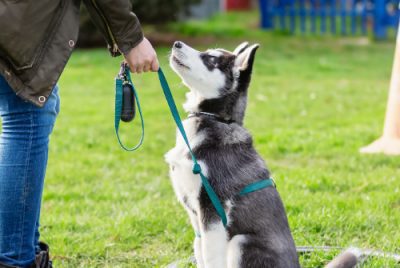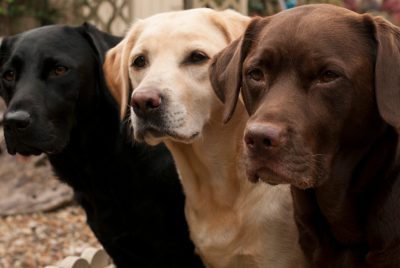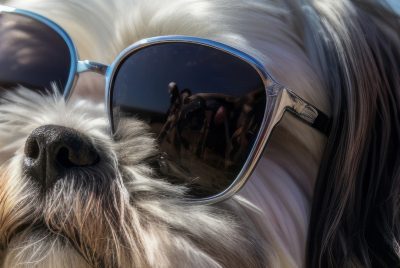Uncover the History of a Dachshund Breed
Post Disclaimer
We may earn a commission for purchases made using our links. Please see our Disclaimer to learn more.
Delve Into the History of a Dachshund Breed
Key Highlights
- Dachshunds, originating in Germany, were initially bred as badger-hunting dogs.
- “Dachshund” literally translates to “badger dog” in German.
- Queen Victoria was a known breed enthusiast, contributing to its popularity.
- Dachshunds come in three coat varieties: smooth, wirehaired, and longhaired.
- Known for their elongated bodies and short legs, health issues like intervertebral disc disease can be a concern.
Introduction
The Dachshund breed has a unique shape and a lively personality. It has a long history with hunting and royal courts. People like Queen Victoria loved this breed, making them one of the most famous owners of Dachshunds. The story of how they went from hunting dogs to beloved pets is fascinating and covers many years. Their popularity comes from their loyalty, playful nature, unique appearance, and beneficial qualities that can be developed through proper obedience training. While the breed is still used for hunting in Europe, it has become a beloved family pet in North America, making it one of the most popular AKC breeds.
Origins of the Dachshund Breed
The Dachshund comes from Germany. People developed this breed for hunting. They are known for tracking and chasing prey underground. At first, they were bred to hunt badgers. This is why their name means “badger dog” in German.
Dachshunds have a unique body shape: a long body and short legs, which help them move easily in burrows. Their strong will and determination also make Dachshunds great hunting partners in Germany.
The Ancestry and Evolution
Initially bred in Germany, the Dachshund descends from hound and terrier lines. Developed for hunting badgers, its name means “badger dog” in German. Over centuries, selective breeding for size and coat type resulted in the Standard, Miniature, and Toy varieties. Their long bodies and short legs, once practical for burrowing, now distinguish them as beloved companions.
The Name and Its Significance
The name “Dachshund” comes from German words. “Dachs” means badger, and “Hund” means dog. This name, which translates to “badger dog,” tells us a lot about why this breed was created. Dachshunds were known for being brave hunters of badgers that lived in burrows.
With their strong will, these dogs would chase badgers underground into their homes. This helped connect the breed to badgers, so the name became popular. Even today, this name reminds us of the dog’s background and its natural hunting instincts.
The “badger dog” history continues with the miniature dachshund breed. However, the modern Dachshund often prefers to snuggle on the couch instead of going into burrows. Even with this change in how they live, the name “dachshund,” which translates to “badger dog,” still proves the breed’s rich past and the unique skills they were bred to have as short hounds used for hunting badgers. The original German Dachshunds, larger and with straight and crook-legged varieties, were the foundation of the modern Dachshund breed.
The Dachshund’s Design and Purpose
The Dachshund’s unique body shape is more than just cute; it shows what it was bred for. Dachshunds were made to hunt badgers and other animals that dig burrows; every part of their body is useful for this task.
Their long body and short, strong legs help them move quickly through tight spaces. Their big chest gives them enough lung space to stay underground for a long time. Their large paws, with strong claws, are perfect for digging out prey from their homes.
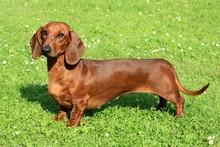
Breeding for Form and Function
As a hunting dog made for a special job, the Dachshund’s body has been carefully shaped over many years. Their short legs are not just for looks. They help the dog move around in badger homes and other underground places.
The Dachshund has a short rib cage, too. This shape lets them be more flexible and get through tight spots better. With their short legs and small body, they can chase after prey even in tricky burrows.
Also, the Dachshund is strong and muscular. Its powerful bite makes it tough for its prey. These physical traits were carefully chosen through breeding, helping it be a great hunting dog.
Roles Throughout History
Dachshunds are most famous for hunting badgers, but they also track other animals. They can find wounded game and sometimes work in groups to hunt bigger animals like wild boar. Their strong sense of smell and loud barks help them excel at this.
People of all social classes loved Dachshunds. Kaiser Wilhelm II, the last emperor of Germany, really liked this breed. Unfortunately, their link to Germany during World War I hurt their popularity in some places.
But after the war, people remembered how lovable and charming they were, and the breed became popular again. Now, Dachshunds are loved all over the world for their history and for being great companions.
The Dachshund in Art and Culture
Dachshunds have always been loved in art and culture. They are not just known for being good hunters. Their unique shape and friendly nature have inspired many artists over the years.
You can see Dachshunds in old paintings and modern sculptures. Their image appears on everything, from fancy dishes to regular home goods. Today, they are still very popular and keep growing in fame, showing that they are truly iconic.
Symbolism and Representation in Germany
Germany’s national symbol, the Dachshund, embodies loyalty, determination, and playful stubbornness. This breed is prevalent in ads, logos, art, and culture. Dachshunds are a strong symbol in German media and daily life, from Andy Warhol’s pop art to political cartoons.
Dachshunds in Literature and Media
The Dachshund is famous worldwide, not just in its home country. Because of its unique shape, people often call them “sausage dogs.” They’ve appeared in books, movies, and TV shows, winning the hearts of many.
Sometimes, this fame leads to funny situations involving Dachshund owners. They may argue about their dog’s success at big dog shows or laugh at how different cultures view these dogs. These stories add to the Dachshund’s interesting history.
The Dachshund can go beyond cultures and touch the hearts of people everywhere. This worldwide fame makes it one of the most loved dog breeds today.
Noteworthy Traits and Characteristics
Dachshunds are loved for more than their history and role in pop culture. People adore them for their special mix of looks and personality. Their unique appearance brings smiles and cute nicknames, but there’s more to them than just how they look.
Under that memorable face is a personality as big as their bark. They are loyal, intelligent, and a little stubborn. This mix of traits has won the hearts of owners for years. It’s this special combination that makes Dachshunds great companions.
Physical Attributes
One of the first things people notice about Dachshunds is their special body shape. They have long bodies and short legs, making them a unique and easily recognizable breed according to kennel club standards. This breed also comes in different coat types and needs different care. The standard dachshund usually weighs between 16 and 32 pounds, while the miniature variety, known for its ability to catch small animals, typically weighs less than 11 pounds. Understanding the physical attributes of this breed, including their miniature variety and recognition by the World Canine Federation and kennel club standards, is crucial to properly caring for them.
There are three main coat varieties: smooth, longhaired, and wirehaired. Each offers a unique look for owners to choose from. Smooth coats are short and need little grooming. Longhaired Dachshunds have silky fur, which needs brushing often to avoid tangles. Wirehaired Dachshunds have a short, wiry top coat and a softer undercoat, giving them a unique appearance despite their small size. They need some grooming, called stripping, to keep their look.
No matter the coat type, all Dachshunds have the same long body and short legs that make them recognizable. Their big, soulful eyes and floppy ears add to their charm.
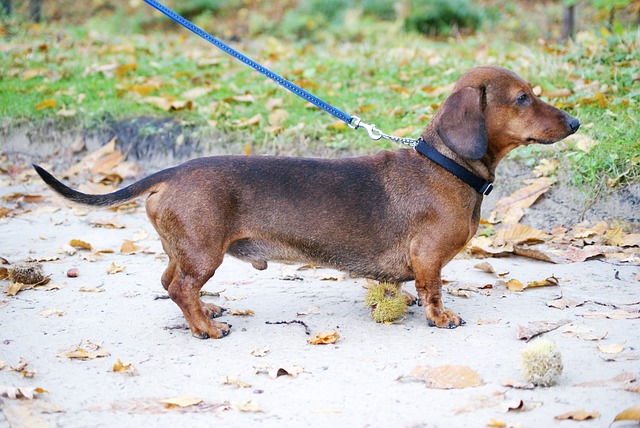
Temperamental Qualities
Dachshunds are famous not just for their looks but also for their big personalities. They were bred to be hunters, which makes them bold and sometimes quite stubborn. Dachshund owners often find this mix of traits both charming and frustrating.
These dogs are smart and can learn quickly. But because they like to do things their way, training them takes patience and consistency. Despite their stubborn side, they are also loving and playful. This makes them fun and loyal companions.
Dachshunds are good watchdogs. Their loud barks alert their owners to possible intruders. Even though their size might make them seem less threatening, they are always ready to protect their loved ones with strong loyalty and devotion.
Health and Care Considerations
Owning a Dachshund is fun and charming, but it also has responsibilities. If you are considering getting one, knowing their health and care needs is important. Their special body shape makes them charming, but it also means they can get certain health conditions.
You should give them the right exercise, have regular training, and ensure they eat a balanced diet. By knowing what health concerns they might face, you can help take good care of your Dachshund.
Lifespan and Wellness
Dachshunds usually live for about 12 to 16 years. But, like many purebred dogs, they can face some health issues. The most common problem is intervertebral disc disease (IVDD). This condition affects the spinal discs. It can cause back pain, trouble moving, and even paralysis in serious cases.
Dachshunds can also have other health issues, including obesity, ear infections, eye problems like progressive retinal atrophy, and some heart conditions. It is important to keep your Dachshund at a healthy weight through a good diet and exercise, which can help lower the risk of IVDD and other health problems.
Regular vet visits are necessary. They help find health conditions early and manage them properly. By taking care of their health and providing a loving home, you can help your Dachshund live a longer and happier life.
Best Practices for Dachshund Care
Caring for a Dachshund involves attending to its specific physical and temperamental needs to ensure its well-being. Daily walks are crucial, not only for exercise but also to satisfy its innate curiosity and provide mental stimulation. It’s important to remember its predisposition to back problems, especially intervertebral disk disease (IVDD), and avoid activities that strain the spine excessively. Additionally, Dachshunds may also be affected by osteogenesis imperfecta, also known as brittle bone disease, so it’s important to be aware of this condition and take necessary precautions.
Grooming routines vary depending on coat type. Longhaired Dachshunds need daily brushing to avoid tangling, while smooth coats require less maintenance. Regular ear cleaning is essential for all Dachshunds to prevent infections.
Here is a simple table highlighting essential care practices:
| Care Aspect | Recommendation |
| Exercise | Daily walks, moderate playtime |
| Grooming | Regular brushing (frequency depends on coat type) and ear cleaning |
| Training | Consistent positive reinforcement methods |
| Health | Regular vet checkups, maintaining a healthy weight |
Adhering to these care practices can help your Dachshund live a happy, healthy, and fulfilling life.
The Dachshund Today
The Dachshund is a beloved dog breed. It is still popular today and is often among the top choices for dog owners in many countries. People love them because they are loyal, playful, and have a cute, stubborn side that captures hearts time and again.
Though they are no longer needed for hunting, modern Dachshunds have found new roles in our lives. They are now cherished family members, provide comfort as therapy dogs, and some even do well in dog sports.
Popularity and Trends
The Dachshund is very popular in the United States. It often ranks in the top ten breeds registered with the American Kennel Club. This lasting popularity shows how versatile the breed is. It has moved from being a hunting dog to a beloved family pet.
The Dachshund Club of America, which started in 1885, promotes good breeding practices and teaches people about the breed. The club holds events, offers resources for Dachshund owners, and works to protect the breed’s heritage.
Dachshunds are known for their adaptable nature and loving personalities. They have become a favorite in many American homes. Whether they are cuddling on the couch or having fun at a dog park, Dachshunds keep winning over the hearts of dog lovers all over the United States.
Dachshunds in Modern Roles
The modern Dachshund lives a very different life from its hunting ancestors. They are smart dogs who love to please their owners, which makes them great for many roles beyond just being pets.
Even though people usually don’t think of them as service dogs because of their size, some Dachshunds do well as emotional support animals. They bring comfort to those who need it. Their strong sense of smell and curious nature also help them excel in scent work and other activities that keep them engaged.
The modern Dachshund is adaptable. They fit well into busy city apartments and everyday suburban homes, showing that they can be loving companions no matter where you live.
Conclusion
Dachshunds have a long history that shows their purpose and meaning. They started as great hunters and have appeared in art and media. These brave dogs have made a mark on cultures around the world. Their special shape and lively nature make them favorite pets today. Knowing about their history and how to care for them helps build a good bond with these amazing animals. Whether you want a loyal hunting buddy or a treasured member of your family, the Dachshund’s lasting charm and flexibility keep winning hearts everywhere.
Frequently Asked Questions
What Makes Dachshunds Excellent Hunters?
The Dachshund is small but has a bold personality. It comes from a long line of badger hunters. This history gives it sharp hunting instincts, making it great at finding small animals underground. Its strong legs and claws help it dig and move around in burrows.



